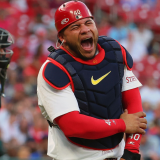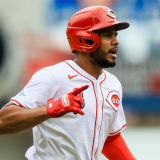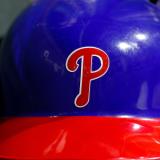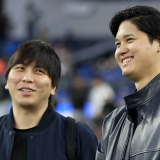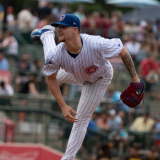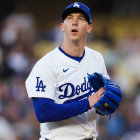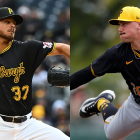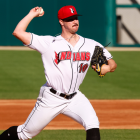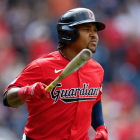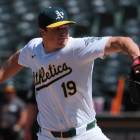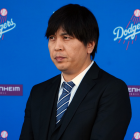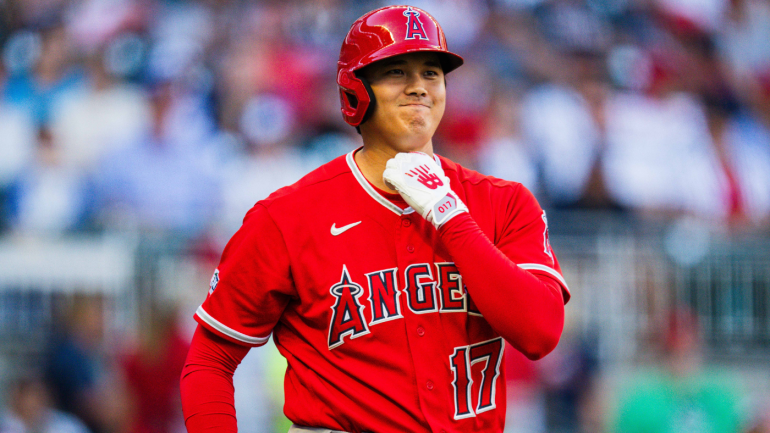
Here's a safe prediction: you'll continue hearing and reading a lot about Los Angeles Angels two-way star Shohei Ohtani between now and the start of the 2024 Major League Baseball season. The reasons are straightforward: Ohtani, in the midst of another MVP-caliber season, is an impending free agent; the Angels, despite not trading Ohtani at the deadline, still face unfavorable odds of retaining him this winter -- in part because all of the league's heavy hitters, from the Los Angeles Dodgers to the New York Mets, intend to pursue him this winter.
So much of the focus when it comes to Ohtani's future, both in the immediate and the long-term sense, concerns the potential suitors and the transactional dilemma facing the Angels. Where will he sign, and for how much? Would it have been better to trade him than to let him walk and fetch draft-pick compensation? So on and so forth. It seems that everyone has read the script and accepts Ohtani's departure from the scene is imminent, but few have left the camera trained on the Angels to see what's next.
Below, we've opted to do just that by taking stock of the Angels' organization, from the big-league roster down to the farm system. Consider this, then, an answer to the question du jour: what could the Angels look like without Ohtani?
Veterans
Let's start by noting that Ohtani isn't the only Angels player on the cusp of free agency. The rest of that list includes several notable teammates, among them right-handers Lucas Giolito, Reynaldo López, and Dominic Leone, outfielders Hunter Renfroe and Randal Grichuk, infielders C.J. Cron, Gio Urshela and Mike Moustakas, and lefty Matt Moore. OK, so the Angels aren't facing an exodus for the ages, but their talent level could drop even lower entering this winter than people realize.
The Angels don't have many long-term commitments on the books. Instead, they make up for the quantity with quality. The quartet of Mike Trout, Anthony Rendon, Tyler Anderson, and David Fletcher will bank close to $96 million total over the 2024-25 campaigns. At that point, Anderson's contract lapses and Fletcher can be bought out for $1.5 million. Trout and Rendon will continue to clear $75 million through the 2026 season.
It's fair to write that owing nearly $100 million to four players -- and specifically those four players -- is not a great situation for the Angels to be in. This is a franchise that has cleared the $200 million payroll mark just once in its history: this year. Fletcher has already been outrighted to the minors this season, suggesting the Angels have soured on him; Anderson has had a disappointing first season in town; and both Trout and Rendon have had their share of injury problems -- Rendon, already in the fourth season of a seven-year pact, has appeared in only 200 games since joining the Angels.
Fates can change in a hurry in baseball, but there is a significant chance the Angels will be spending half or more of their payroll on those players without getting a ton of on-field production in return. To wit, the foursome has combined this season for three Wins Above Replacement, according to Baseball Reference. Do note Trout himself has been worth an estimated three WAR, meaning the other three have contributed at a combined replacement level. That's a cool $32 million per WAR, for those unwilling to do the math.
On the bright side, the Angels' other future financial commitments are modest in scope and are largely limited to the 2024 season:
- Brandon Drury: $8.5 million
- Max Stassi: $7 million (plus a club option for 2025)
- Carlos Estévez: $6.75 million
- David Fletcher: $6 million
The Angels may have to pay Aaron Loup a $2 million buyout this winter. Luckily, they won't have to bother with Eduardo Escobar's $500,000 figure -- the New York Mets are on the hook for that as part of the trade agreement.
Everyone else on the roster falls into the subsequent categories.
Arbitration players
The Angels project to have at least six players qualify for their second year of arbitration this offseason. While that benchmark is often associated with closing in on free agency (as well as landing a fairer paycheck), some of the relevant Angels are either at or nearing a career crossroads.
Rotation members Patrick Sandoval, Griffin Canning, and Jaime Barria will all be in their second arbitration years; injured southpaw José Suarez will be in his first. Meanwhile, lineup fixtures like outfielder Taylor Ward and infielder Luis Rengifo will also return for a second year of arbitration.
Patrick Sandoval's 2Ks in the 3rd...and sword. ⚔️ pic.twitter.com/CTx4FdKrMV
— Rob Friedman (@PitchingNinja) June 17, 2023
Realistically, this is the group that would be most impacted if the Angels engage in a fuller teardown after Ohtani exits. Sandoval has had his strikeout rate slip this season after back-to-back quality years, but his whiff rate remains above the league-average and similar to his 2022 mark. Canning has pitched well in his return from a missed season due to back surgery, and Barria has answered the call while splitting the year between the rotation and bullpen.
The returns on the position player crop haven't been as green. Ward and Rengifo have both failed to build upon how they performed last season.
Pre-arbitration players
Of the Angels' top 12 performers this season, as dictated by WAR, only four are in the pre-arbitration phases of their careers: outfielder Mickey Moniak, shortstop Zach Neto, lefty Reid Detmers, and catcher Matt Thaiss. Of those four, Neto and Detmers are the best bets to remain above-average players.
Both are recent first-round picks who reached the big leagues in a hurry and have held up their ends of the bargain. Despite having more plate appearances in the majors than the minors, Neto has shown off a good feel for contact and has atoned for a low walk rate by serving as a ball magnet. Detmers will soon clear the 50-career start mark and has upped his velocity and his strikeout rate this season -- the latter at least in part due to an increased emphasis on his slider.
Zach Neto UNLEASHES on this two-run jack!
— MLB Pipeline (@MLBPipeline) July 16, 2023
The @Angels rookie picks up where he left off last month, smoking his 4th homer in his last 21 at-bats: pic.twitter.com/AORiR1oFRL
Moniak and Thaiss, arguably the most pleasant surprises of the Angels' season, are trickier to feel confident in. The former has provided slugging against right-handed pitching, but he's struck out nearly 12 times per walk and that's almost never a formula for long-term success. Thaiss swings and misses entirely too often for a batter whose power plays more to doubles than home runs but, unlike Moniak, he possesses an excellent feel for the zone.
We'd be remiss if we didn't mention injured catcher Logan O'Hoppe and outfielder Jo Adell. O'Hoppe is the Angels' catcher of the future; Adell remains a whiff-ridden enigma nearing his 25th birthday.
Prospects
The ticking clock of Ohtani's free agency has served as the soundtrack for the Angels in all aspects of player acquisition, including the draft. The organization has, in turn, tilted its amateur approach toward "readier" players who they can then push through the minors at an aggressive rate.
Sure enough, most of the Angels' top prospects -- Neto, O'Hoppe, right-handers Chase Silseth, Sam Bachman, and Ben Joyce -- have already tasted the big-league coffee. The exceptions had been switch-hitting catcher Edgar Quero, lefty Ky Bush, and shortstop Kyren Paris. Of those, only Paris remains, with both Quero and Bush being shipped to the White Sox as part of the Giolito trade.
Have a night, Nolan Schanuel! The Junior outfielder went 3-4 with 3 home runs and 5 RBIs! He's now hitting .432 this season with 6 HR, 19 RBI, and twice as many walks (12) than he has Ks (6). Super rhythmic operation and consistently gets into good hitter's position. ++ Approach pic.twitter.com/Gh868JkRJW
— Peter Flaherty III (@PeterGFlaherty) March 8, 2023
The Angels had just two draft picks among the top 100 in this class. They used No. 11 to select FAU first baseman Nolan Schanuel and later tabbed Stanford outfielder Alberto Rios with pick No. 79. Both players' skill sets are geared toward offense. Schanuel posted video-game numbers against weaker competition thanks to an above-average feel for contact and the strike zone; Rios, for his part, emerged this spring to slug all 18 of his collegiate home runs.
The Angels, to their credit, did go well over slot in the eighth round to sign prep right-hander Barrett Kent. He received $1 million despite being picked at No. 234, a spot that has a recommended signing bonus of just $206,500. Kent has shown the makings of a well-rounded arsenal, but will require some time in order to reach his upside.
Overall, it's fair to conclude that the Angels have a below-average system. One that, at present, does not seem to feature much in terms of impact ability.
Conclusion
This exercise is, in a sense, an explanation for why Ohtani would seek out greener pastures. The Angels have some quality players, but they don't appear to have the kind of growth capacity -- be it through payroll flexibility, trade options, or internal promotions -- that is necessary to transform this team into a steady playoff presence, let alone a championship contender.
Maybe this isn't a surprise considering the Angels have failed time and again to make the playoffs with Ohtani in tow, but their immediate outlook without him is not particularly promising. At the same time, they also lack the kind of players who would fetch substantive returns, allowing them to enact a quick turnaround so that they could maximize what remains of Trout's prime.
The one exception to that statement was, of course, Ohtani himself. You can see then why the Angels were willing to empty the top of their farm system once they decided to roll with Ohtani: if he leaves, they're going to require a hard reset anyway, so why not take one more swing?








